Best Time to Visit Vietnam from North to South (2025)
Vietnam is one of those places that seems to have it all. Breathtaking landscapes that stretch along an S-shaped coastline, a rich and colorful culture, amazing food everywhere you go — and, of course, the kind of travel experiences that stay with you long after the trip ends. But with such a long and diverse country, the weather can change a lot from region to region. So one big question remains: when is the best time to visit Vietnam?
Let’s walk through it together! We’ll start by exploring Vietnam by region, then dive into what each season offers month by month. Whether you’re a beach lover, a mountain hiker, or someone who wants to soak in culture and street food, there’s a perfect time waiting for you.
An Overview of the Climate in Vietnam
Vietnam has a tropical monsoon climate, but due to its long terrain each region has its own distinct characteristics. From the temperate North to the tropical South, the climate changes gradually. Notably, Northern Vietnam experiences four distinct seasons, while Central and Southern Vietnam each have two main seasons: the dry season and the rainy season.
>> Read More: Rainy Season in Vietnam: Best Activities & Travel Tips

Famous tourist destinations in Vietnam not to be missed
Photo by: Cellphones
Best Time to Visit Vietnam by Region
Northern Vietnam
Northern Vietnam is located at a higher latitude, so if you’re heading to places like Hanoi, Sapa, Ninh Binh, or Ha Giang, etc., expect four distinct seasons:

Explore tours in Northern Vietnam
Photo by: nangvang
- Winter (December to February): with cool, dry air and the occasional drizzle, Northern Vietnam settles into a peaceful chill. Temperatures typically range from 10°C to 20°C, but in the mountains, it can drop to 5°C or even lower. Places like Sapa and Hanoi take on a misty, romantic vibe, perfect for those who love quiet winter escapes.
- Spring (March to May): as the weather turns warm and pleasant, everything comes alive! This is the golden season in Northern Vietnam, drawing travelers from around the world to witness cherry and plum blossoms painting the mountainsides. From the lush terraced fields of Sapa to the highlands of Moc Chau and Ha Giang, springtime here is truly a sight to behold.
- Summer (June to August): with hot and humid weather, heavy rain especially in July and August. During this season, the temperature will fluctuate from 25°C to 35°C, in some places sometimes exceeding 40°C. Still, it’s a great time to hit the beach, cruising in HaLong Bay, and enjoy all kinds of summer fun by the water.
>> Explore More:
Ha Long Bay Seaplane Tour: Aerial Views & Island Discovery
Bai Tu Long Bay Luxury Cruise: Private Itinerary & Cultural Experience
Lan Ha Bay Cruise: Relax, Kayak & Scenic Sunset
- Autumn (September to November): this is one of the most beautiful times to visit Northern Vietnam. The weather turns cool, dry, and pleasant, with little rain and comfortable temperatures. Hanoi becomes especially romantic, with golden leaves falling along quiet streets. It’s also a season full of culture, with major celebrations like National Day (Sep 2nd) and the Mid-Autumn Festival giving visitors a chance to experience Vietnam’s festive spirit.
Key Takeaways: The optimal period for visiting the North is from September to November, as the cool and dry climate, along with the stunning natural landscapes, creates ideal conditions for sightseeing and exploration.
Experience Northern Vietnam with us:
10-Day Northern Vietnam Tour: Sapa, Hanoi & Ninh Binh Exploration
Pu Luong Escape: Mountain Serenity & Cultural Trek from Hanoi
The Northwest arc of VietNam: Mai Chau – Moc Chau – Dien Bien – Lai Chau – Sa Pa
Central Vietnam
Central Vietnam is a combination of mountains and coastal plains divided into 3 regions: North Central, Central Highlands and South Central Coast. In contrast to the North, this region experiences two seasons: the dry season and the rainy season.
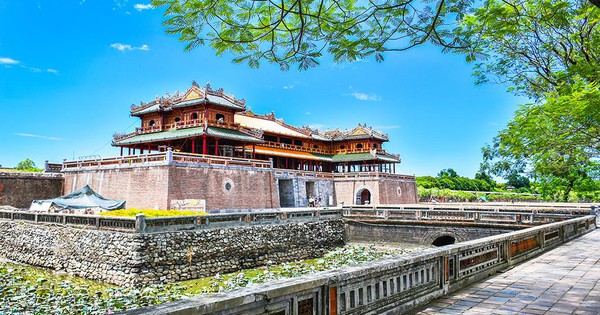
Captivating and appealing travel locations in Central Vietnam
Photo by: namthientravel
- The dry season (January to August): with daytime temperatures ranging from 24°C to 28°C, characterized by hot and arid conditions. Particularly during June, July, and August, this period is ideal for beach enthusiasts, offering opportunities to relax on the stunning shores of Da Nang and Nha Trang, or to explore the historic towns of Hoi An, as well as trekking at Ganh Da Dia and O Loan lagoon in Phu Yen. Tourists are advised to take precautions against the intense sunlight.
- The rainy season (September to December): During this time, temperatures range between 25°C and 30°C, but conditions can vary significantly by region. The Central region, in particular, is known for its intense rainy and flood season. Starting in early September, heavy rainfall begins to impact provinces like Thanh Hoa (300–400mm), Vinh and Hue (350–450mm), and Da Nang (250–350mm). The peak of the rainy season occurs in October and November, with widespread, prolonged downpours that can lead to flash floods, landslides, and riverbank erosion. Flooding typically lasts from October to December, though in some years it arrives as early as September. This period also brings an increased risk of tropical storms, particularly in October and November. Due to these hazardous weather conditions, travelers are advised to avoid visiting the Central region during this time, especially if planning outdoor activities.
Key Takeaways: The optimal period for visiting the Central region is from March to May, during which the weather is characterized by dryness and sunshine, and the sea remains calm, making it ideal for sightseeing and beach vacations.
Experience Central Vietnam with us:
Hoi An, Cham Island & Da Nang: Heritage, Beaches & Culture Tour
Discover Da Nang – Hoi An – Ba Na Hills – Hue – Quang Bình
Da Nang – Hoi An – Quy Nhon: Vietage Luxury Train & Coastal Vietnam
Southern Vietnam
Southern Vietnam is a mix of buzzing Ho Chi Minh City, lush Mekong Delta, and dreamy Phu Quoc Island. Being close to the equator, it stays warm all year—so warm that locals joke there are only two seasons: hot and boiling! Like in Central Vietnam, the weather flips between dry and rainy seasons, though their timing can change a bit each year.
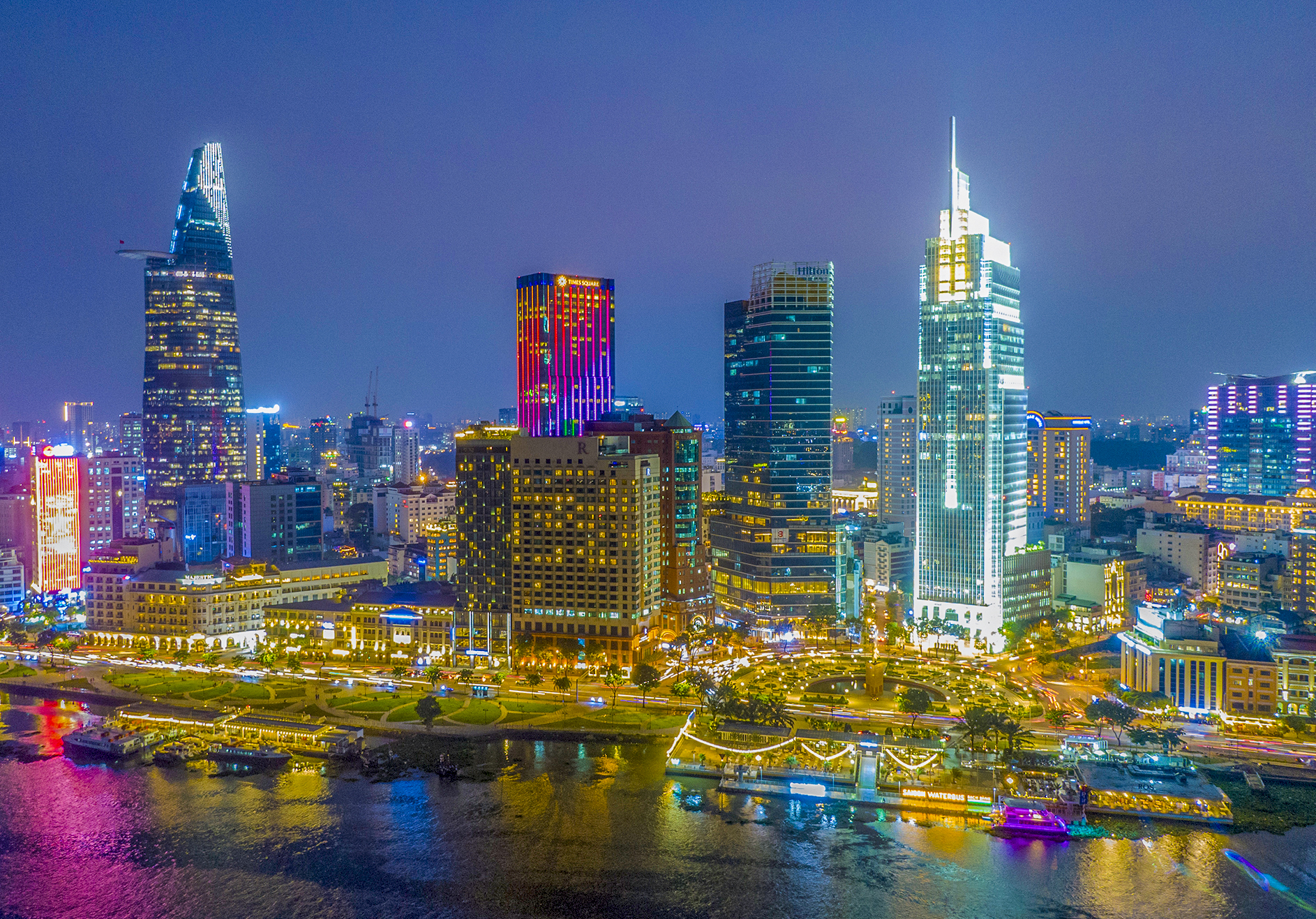
Amazed by the modern beauty of Ho Chi Minh City in the southern region
Photo by: baonguoilaodong
- The dry season (November to early May): At this time the weather is hot and sunny with little rain with an average temperature of 25°C to 30°C. This is an ideal time for tourists to discover the lively and dynamic Ho Chi Minh City, as well as the Mekong Delta, where they can experience the Cai Rang floating markets, the Tram Su forest, savor garden fruits, or unwind on the beautiful island of Phu Quoc.
- The rainy season (May to October): This season in the South is marked by unexpected afternoon showers, high humidity, and occasionally intense rainfall. Nevertheless, these downpours are usually brief, making it a suitable time for adventurous visitors to explore the river delta, enjoy the vibrant colors of ripe fruits, and engage in ecotourism within garden areas.
Key Takeaways: The optimal period for visiting the South is from December to March, as the weather during this time is dry, sunny, and highly conducive to sightseeing and exploration activities.
Experience Southern Vietnam with us:
Luxury Vietnam Tour: North, Central & South Exclusive Journey
Mekong Delta Tour: My Tho – Can Tho – Ca Mau – Bac Lieu
Ho Chi Minh City Highlight and Cruise Dinner
Best Time to Visit Vietnam by Month: Real Tips from Locals
Now that you’ve seen what each region is like, let’s take a look at Vietnam month by month. Instead of repeating the weather, we’ll focus on events, local experiences, and how to travel smarter.
>>Read More: Top 8 Most Iconic Festivals in Vietnam
December to March
This is when Vietnam is at its best weather-wise. It’s cool in the north and warm in the south. You’ll find clear skies almost everywhere.
- Ideal for visiting: Hanoi, Ho Chi Minh City, Mekong Delta, Phu Quoc Island, Hue and Hoi An.
- Events and activities:
- Christmas is celebrated with lights and festive vibes, especially in cities
- Tet (Vietnamese New Year) hits in late January or early February. It’s festive, but be prepared as locals travel home, many businesses close, and service prices skyrocket. It’s a unique cultural moment, but not the easiest time to explore. You can still visit, just plan ahead and embrace the slower pace.
- Dalat Flower Festival is biennially held in December
- Buon Ma Thuot Coffee Festival for those coffee lovers
- Famous Ao Dai Festival in Ho Chi Minh City
- Keo Pagoda Festival Thai Binh folk cultural identiy
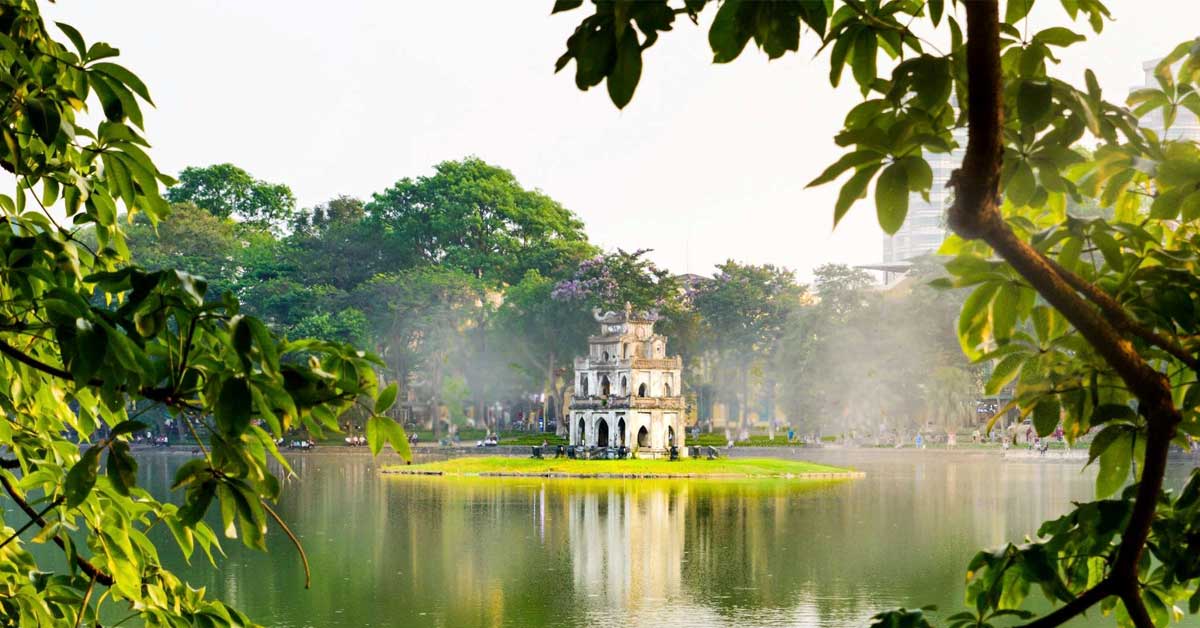
The poetic beauty of Hoan Kiem Lake in the capital Hanoi
Photo by: hoanghamobile
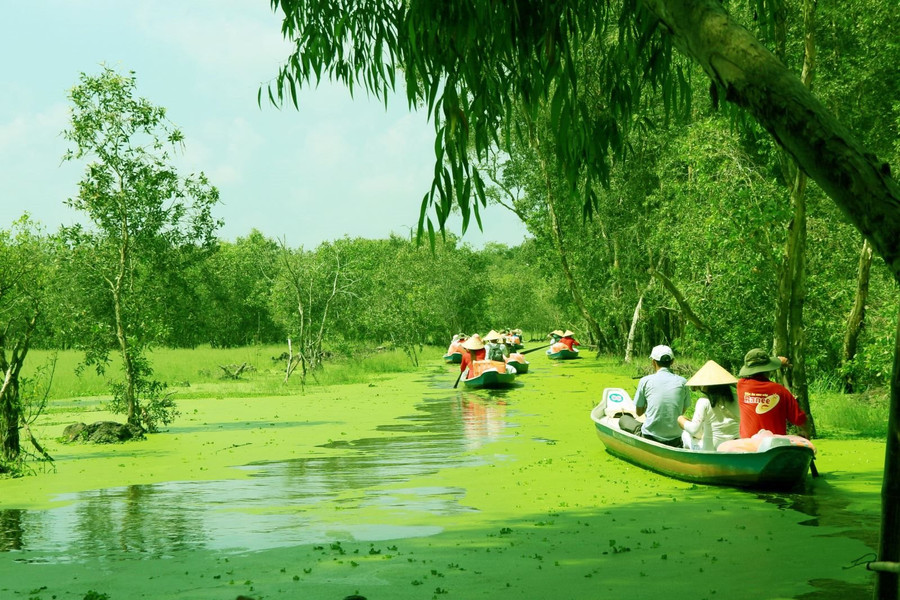
Impressed by the beauty of the Mekong Delta river in the South
Photo by: baotainguyenmoitruong
April to June
This is what we’d call the sweet spot. The weather is still mostly nice, but fewer tourists are around compared to winter or summer.
- Ideal for visiting: Hoi An, Hue, Da Nang, and northern highlands like Ha Giang or Pu Luong
- Events and activities:
- Reunification Day (April 30th) and Labor Day (May 1st) are lively
- Great time for hiking, waterfalls, and exploring nature
- Warm enough for beach days, but without the full summer heat.
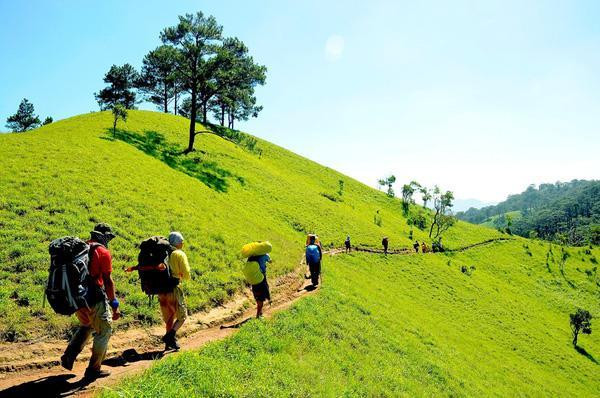
The best time to go hiking in the northern mountains of Vietnam.
Photo by: timchuyenbay
Experience the magnificent sunset from the summit of Lung Cung trekking peak. Photo by: junglebosstours
July to August
This is Vietnam’s peak summer season, and it’s also the prime time for family vacations, especially among domestic travelers. Central Vietnam basks in hot and sunny weather while the North and South get more rain. However, this period is not ideal for visitors to the North, where hiking trails become muddy and challenging, and cities like Hanoi and HaLong Bay frequently experience heavy rainfall.
- Ideal for visiting: beach destinations like Nha Trang, Da Nang, Phan Thiet, Mui Ne, Quy Nhon, etc.
- Events and activities:
- Vu Lan Festival
- Warm enough for beach days, but without the full summer heat.
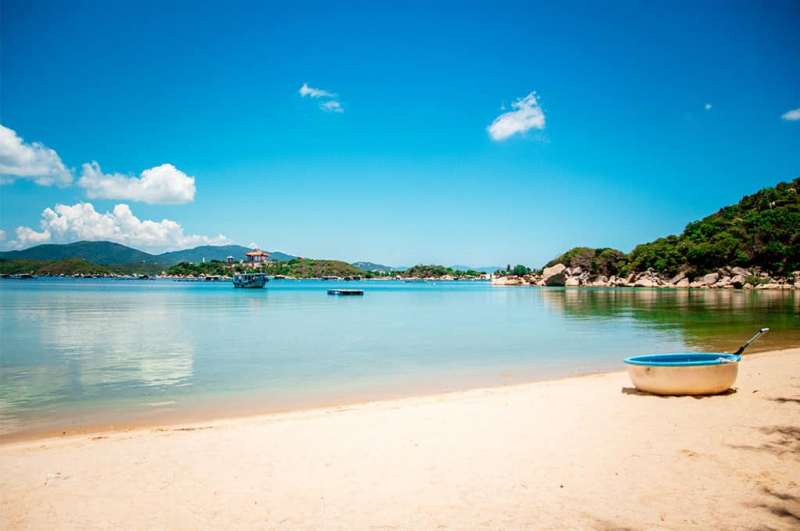
Amazed by the beauty of Nha Trang beach – the pearl of Khanh Hoa province
Photo by: VietAir
September to November
Like the months of April to June, September to November is also part of Vietnam’s off-peak travel season, between the hot summer and cool winter. Expect a mix of sun and light rain, but rarely anything extreme. It’s a great time to avoid crowds, save on costs, and explore the country in mild weather. October and November are especially ideal for Ha Long Bay, with dry days and pleasant temps. Just pack for both sunshine and showers.
>> Read More: What to Wear in Vietnam: Complete Guide for Travelers
- Ideal for visiting: Northern Vietnam like Mu Cang chai, Ha Giang, Hanoi, Ha Long Bay
- Events and activities:
- Vietnam National Day (Sep 2) with patriotic parades and fireworks
- Mid-Autumn Festival (Sep/Oct) filled with Lanterns, mooncakes, and lively street processions.
Key Takeaways: The Best Time Depends on Your Travel Style
Vietnam’s beauty changes with the seasons, from misty mountain mornings in the North to tropical island sunsets in the South. Whether you’re chasing beach days, cultural festivals, or cool trekking adventures, there’s always a perfect time to visit, as long as you know where to go.
So, align your trip with your interests! Beach? Go in Summer. Culture and landscapes? Choose Autumn. Festive vibes? Try winter instead. Still unsure? Connect with us on Whatsapp or visit My Vietnam Tours. Let us help you design the perfect 2025 journey through Vietnam — rich with color, flavor, and unforgettable memories.
>> Read More: Tour or No Tour? Key Tips for Traveling Vietnam in 2025

